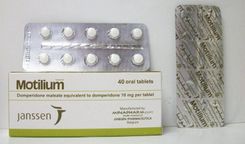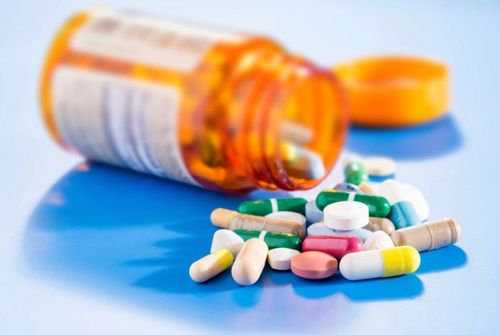This is an automatically translated article.
Aticef 250 is a drug with the main active ingredient cefadroxil intended to treat infections in many different organs such as urinary tract, respiratory skin and soft tissue. The following article will introduce you to some information about this drug.
1. Uses of the drug Aticef 250
Cefadroxil is a medium-spectrum antibiotic with bactericidal ability against gram-positive bacteria such as staphylococcus, pneumococcus, streptococcus (except methicillin-resistant streptococcus). In addition, the drug is also effective on some gram-negative bacteria such as E.coli, Proteus mirabilis, Klebsiella pneumoniae and Shigella.
Cefadroxil works with the mechanism of inhibiting bacterial cell wall synthesis to help destroy the final stage of bacterial cell wall synthesis, so that bacteria without a wall will be destroyed.
There are some strains resistant to cefadroxil including methicillin-resistant Staphylococcus, Enterococcus, Enterobacter, Proteus with positive indole reaction, Pseudomonas aeruginosa, Bacteroid.
2. Indications of the drug Aticef 250
Cefadroxil is used in the treatment of infections caused by susceptible bacteria such as:
Urinary tract infections with complications or recurrence, including cystitis, pyelonephritis. Acute and chronic kidney disease, urethritis. Infections of the skin and skin structures such as abscesses, lymphadenitis, cellulitis, ulcers. Tonsillitis and pharyngitis caused by group A beta hemolytic streptococci. Studies have shown that cefadroxil is effective in completely killing Streptococci in the nasopharyngeal region. However, the effectiveness of Cefadroxil in the prevention of acute rheumatic fever has not yet been found. Lower respiratory tract infections such as pneumonia, bronchiectasis, acute exacerbation of chronic bronchitis,... Infections of muscles, bones and joints. The use of Aticef 250 is contraindicated in patients with hypersensitivity to cephalosporin antibiotics.
3. How to use aticef 250
Cefadroxil is acid-stable so it can be taken orally and regardless of the meal. Taking the drug at the same time with food may help reduce the gastrointestinal symptoms that sometimes arise during treatment with oral cephalosporins.
Depending on the age, the dose for each subject will be different:
In adults:
Patients with skin infections and skin structures: Take 1 gram per day, divided into 2 times and use scissors 10 days long.
Bone and joint infections or respiratory tract infections and: In mild to moderate infections, 500mg orally 2 times a day, severe cases 1g orally 2 times a day for 7-10 days or more .
In children
Children use Cefadroxil in suspension.
Dosage by weight is 30mg/kg/day, divided into 2 times every 12 hours as directed by the doctor. Depending on the body weight can be divided as follows:
Under 5kg: 2 times a day, each time 1/2 teaspoon 5-10kg: 2 times a day, each time 1-2-1 teaspoon 10-20kg : 2 times a day, 1-2 teaspoons 20-30kg each time: 2 times a day, 2-3 teaspoons each time For patients with renal failure, the dose of Cefadroxil should be adjusted depending on the creatinine clearance to Limit the ability to accumulate drugs in the body. Experts recommend that in adults, the starting dose is usually 1g of Cefadroxil and the maintenance dose if creatinine clearance ml/min/1.73m2 is 500 mg. In which the interval between 2 doses is as follows:
Creatinine clearance 0-10ml/min: 36 hour interval between 2 doses Creatinine clearance 10-25ml/min: 24 hour interval between 2 doses System Creatinine clearance 25-50ml/min: The interval is 12 hours between 2 doses. Creatinine clearance above 50ml/min is considered normal renal function so it can be treated according to the usual regimen.
4. Interactions between Aticef and other drugs
Some drugs that may interact with anticef 250 if used at the same time include:
Potassium-sparing diuretics, potassium supplements or potassium-containing salt substitutes causing a rise in serum potassium and an increase in serum potassium. Serum creatinine in patients with heart failure. Cholestyramine has the ability to bind to cetadroxil in the intestine, slowing the absorption of the drug. Probenecid used at the same time as cefadroxil may decrease the excretion of cetadroxil. Turosemide, an aminoglycoside may exhibit increased nephrotoxicity when co-administered with cetadroxil.
5. Some side effects of Aticef 250
Cefadroxil is very well tolerated in many other age groups. However, there may still be some side effects such as:
Digestive disorders including vomiting, nausea. Hypersensitivity reactions are uncommon with symptoms of urticaria , rash Rare reactions such as genital pruritus, vaginitis, transient neutropenia. These symptoms may disappear when the drug is discontinued.
Aticef 250 is a drug with the main active ingredient cefadroxil intended to treat infections in many different organs such as urinary tract, respiratory skin and soft tissue. To ensure effective use and avoid side effects, users need to strictly follow the instructions of the doctor, professional pharmacist.
Follow Vinmec International General Hospital website to get more health, nutrition and beauty information to protect the health of yourself and your loved ones in your family.
Please dial HOTLINE for more information or register for an appointment HERE. Download MyVinmec app to make appointments faster and to manage your bookings easily.













